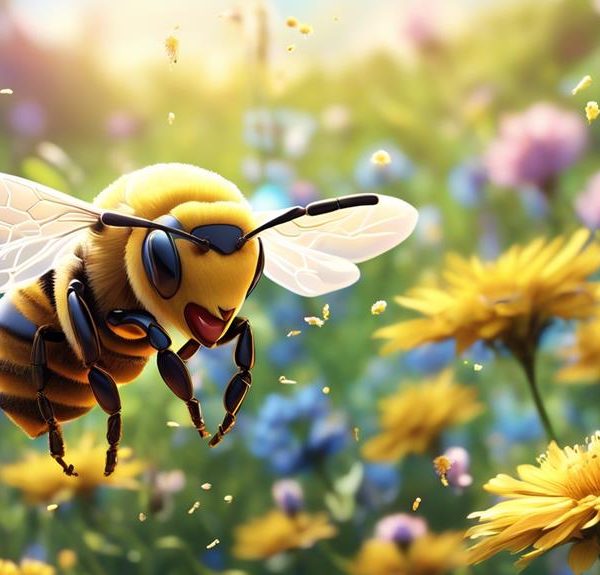Yes, bees are attracted to UV light, but how does this unseen spectrum influence their behavior? Uncover the mystery in our intriguing exploration.
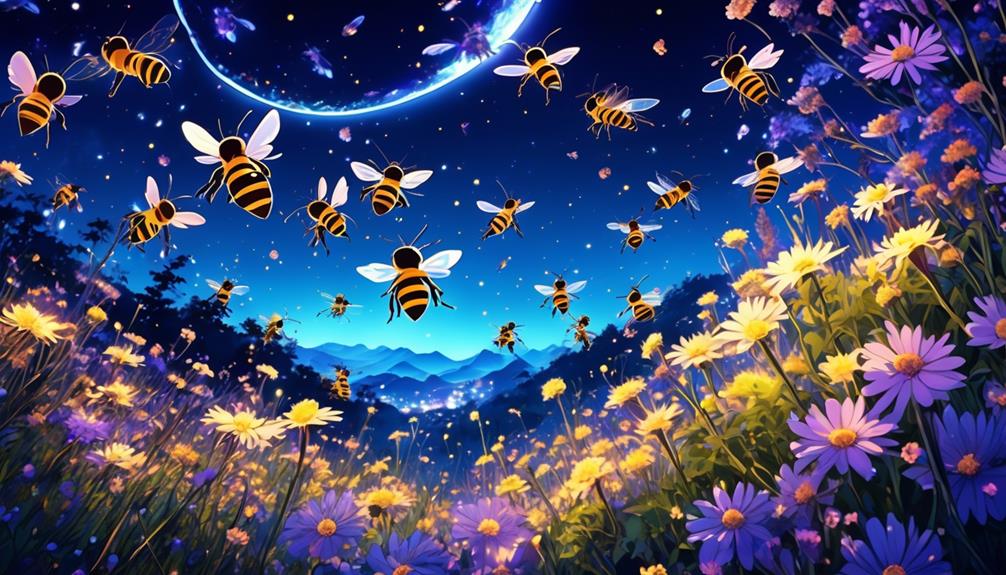
Are Bees Attracted to UV Light?
Ever heard the phrase 'bee-line for something'? As it turns out, bees don't just randomly flit around your garden; their navigation is much more sophisticated than you might think.
In fact, their ability to perceive ultraviolet light, invisible to the human eye, makes their world look vastly different from ours. Perhaps you've wondered whether bees are attracted to UV light and how it influences their behavior.
Well, you're about to embark on a fascinating journey into the complex relationship between bees and the unseen spectrum of light. Hold on, because we're just scratching the surface of this intriguing topic.
Key Takeaways
- Bees can see ultraviolet light and are attracted to it, using it to find nectar and communicate food source locations.
- UV light plays a pivotal role in guiding bees' behaviors and interactions within their environment, aiding in their survival and foraging efficiency.
- Bees' vision is most sensitive to UV light, enabling them to detect patterns on flower petals and navigate even on cloudy days.
- Exposure to artificial UV light can disrupt bees' circadian rhythms and affect their feeding and mating patterns, highlighting the importance of natural UV light sources for bees.
Understanding Bees' Vision Capabilities

To really grasp why bees are drawn to UV light, you'll need to understand their unique vision capabilities, which significantly differ from our human perception. Unlike us, bees can see ultraviolet light, a part of the spectrum that's invisible to our eyes. This unusual ability is a result of their trichromatic vision, an attribute they share with humans. However, while we base our color perception on red, green, and blue (RGB) receptors, bees' vision revolves around ultraviolet, blue, and green.
The UV perception helps bees detect patterns on flowers that are invisible to us. These patterns, often called 'nectar guides', lead bees directly to the flower's nectar source, in essence, a roadmap for bees. Furthermore, the UV light reflected by flowers has a polarizing effect, which bees use for navigation.
In addition, bees' eyes are constructed differently. They've compound eyes, composed of numerous small lenses, each capturing a different angle of the view. This gives them a wide field of vision, enabling them to see predators and obstacles from different angles.
Understanding these unique vision capabilities of bees unravels why they're attracted to UV light, helping us better comprehend their behavior and survival strategies.
Bees and UV Light Relationship
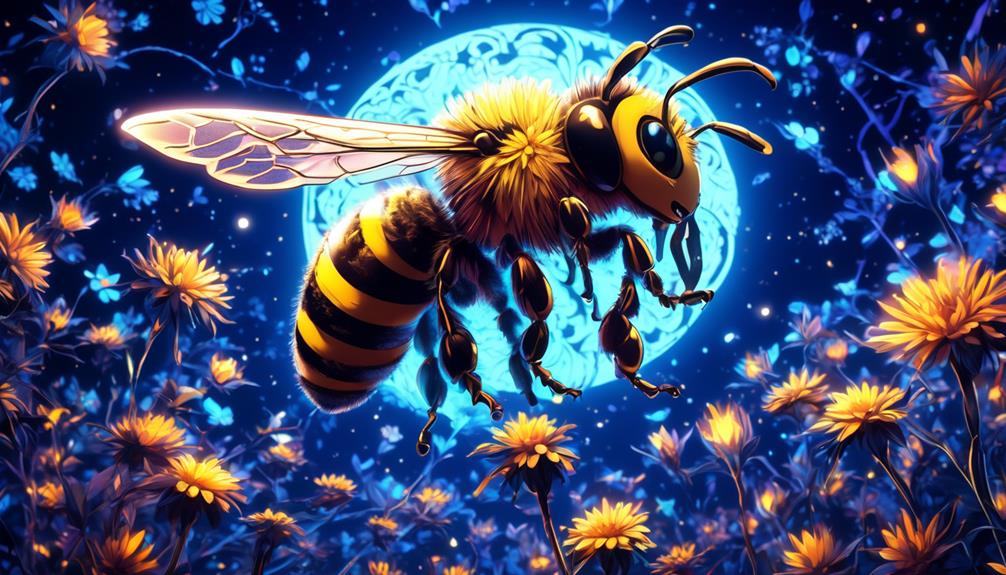
With this understanding of bees' unique vision capabilities, it's clear why UV light plays such a pivotal role in their lives, guiding their behaviors and interactions within the environment. Bees are not just attracted to UV light, but they use it to find nectar, communicate with other bees, and even navigate through their surroundings.
To further illustrate, consider the following table:
Behavior | Role of UV Light | Effect on Bees |
|---|---|---|
Foraging | Bees can see UV patterns on flowers that are invisible to the human eye. | This helps bees find nectar more efficiently. |
Communication | Some species of bees use UV light for communication, particularly in dances that convey the location of food sources. | This enables better coordination among bees in a hive. |
Navigation | Bees use the UV light from the sun to navigate. | This helps bees return to their hive after foraging. |
This complex relationship between bees and UV light underscores the importance of UV light in their daily lives. Understanding this relationship can aid in developing strategies for bee conservation. After all, a world without bees would be a world without flowers, fruits, and the vital ecosystems they support.
Scientific Research on Bees and UV
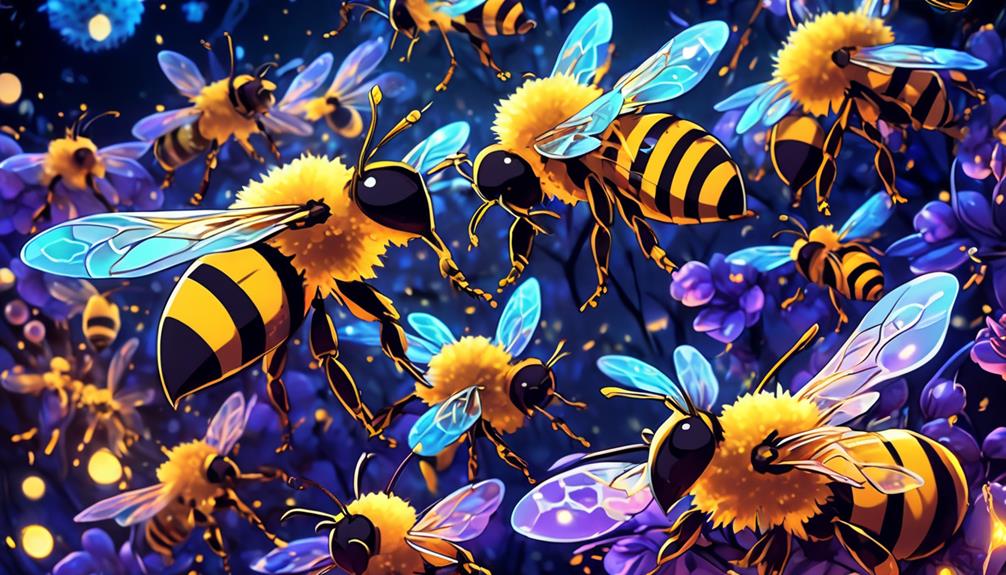
Diving deeper into the realm of scientific investigation, let's examine the various research studies conducted to understand the intricate relationship between bees and UV light.
Groundbreaking studies have shown that bees, unlike humans, can see UV light. It's a fascinating revelation, as this ability helps bees detect patterns and markers on flowers that are invisible to us. This UV vision guides them to the best nectar sources, effectively aiding their survival.
Scientists have discovered that bees are attracted to UV light, but they're also sensitive to it. They've found that too much exposure to UV rays can damage bees' eyes and affect their navigation skills. Researchers at the University of Calgary found that bees exposed to high-intensity UV light showed signs of visual impairment, struggling to return to their hives.
Moreover, research by the University of Bristol suggested that UV light can impact bees' circadian rhythms. Their study found that bees exposed to UV light during the night became active, disrupting their natural sleep patterns.
Misconceptions About Bees and UV Light
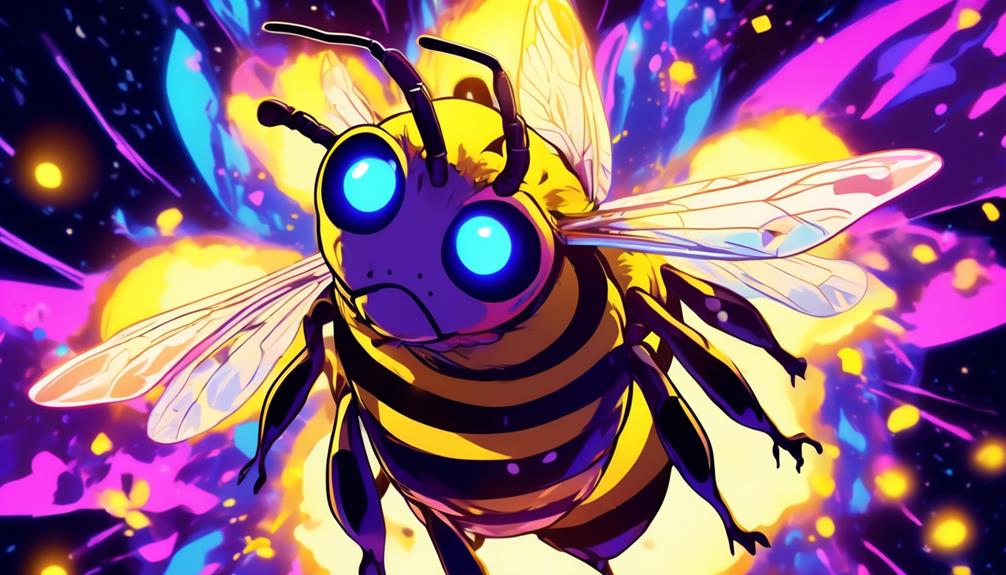
Despite the scientific findings, there exists a myriad of misconceptions about bees and UV light that often cloud our understanding of this unique relationship.
You might've heard the common fallacy that bees don't see UV light. Contrary to this, research shows they're highly sensitive to UV wavelengths—seeing beyond the spectrum visible to humans. Bees use UV light to locate flowers, which reflect it in distinct patterns, guiding them towards nectar.
Another widespread misconception is that bees are attracted to UV light in the same way as insects like moths. This isn't the case. Bees don't flutter around artificial UV light sources at night, as they're primarily diurnal creatures. They're more drawn to natural UV light from the sun, not from your porch light.
Lastly, there's the misunderstanding that UV light harms bees. While excess UV radiation can damage living organisms, bees have evolved to thrive under the sun's UV light, aiding their navigation and foraging abilities.
Impact of UV Light on Bee Behavior
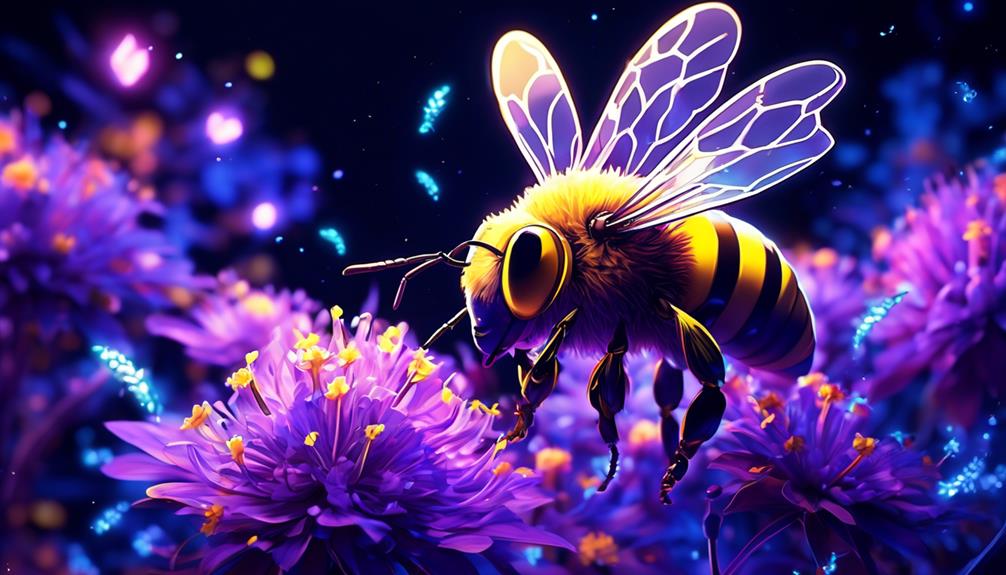
Building on the understanding that bees aren't just tolerant of UV light but are also highly attracted to it, let's explore the profound impact this unique light spectrum has on their behavior.
UV light, specifically in the 300-400 nanometer range, triggers significant behavioral responses in bees. This isn't a random preference, but a crucial survival tool.
Bees' vision is most sensitive to UV light. This enables them to detect patterns on flower petals, invisible to the human eye, which guide them to nectar. This phenomenon, known as 'bee's purple', enhances their foraging efficiency and pollination success.
UV light also impacts bees' navigation. They use the sun as a compass and UV light helps them maintain their orientation even on cloudy days. This UV light detection capability is a key element in their extraordinary 'waggle dance', a communication method used to convey the location of food sources to their hive mates.
Furthermore, studies show that exposure to artificial UV light can disrupt bees' circadian rhythms, affecting their feeding and mating patterns.
Frequently Asked Questions
What Other Types of Light Are Bees Attracted to Besides UV Light?
You're curious about the types of light bees are attracted to.
Well, besides UV light, bees are also drawn to blue and yellow light. They're not just relying on color, but also on patterns and polarized light, which assists them in their extraordinary navigation skills.
However, they're not able to see red light, which appears as black to them. Essentially, bees' vision is tuned to detect the colors of flowers.
How Does UV Light Affect the Lifespan of Bees?
When considering how UV light affects a bee's lifespan, it's crucial to understand bees' biology.
UV light doesn't directly shorten their lifespan. However, excessive exposure can harm their vision, making foraging more challenging. This could indirectly impact their lifespan.
Can UV Light Be Used as a Method for Pest Control Against Bees?
Yes, you can use UV light for pest control against bees. Bees perceive light differently than humans and are attracted to UV light. This makes UV lights effective tools for luring bees.
However, it's crucial to note that bees play a vital role in pollination, so indiscriminate killing can harm the ecosystem.
It's better to use UV light traps that capture rather than kill them, allowing for safe relocation.
Do Bees' Attraction to UV Light Vary Between Different Species of Bees?
Yes, the attraction of bees to UV light can vary among species.
You see, bees' visual spectrum extends into the ultraviolet, but not all species respond the same way to UV light.
Some might be more drawn to it than others, depending on factors like their specific environmental adaptations and feeding behaviors.
It's an interesting area of study and could potentially be used to develop more effective pest control methods.
How Does the Bees' Attraction to UV Light Impact the Pollination Process?
Yes, a bee's attraction to UV light significantly impacts pollination.
When bees see UV light, they're drawn to the source believing it's a flower. They then collect pollen, inadvertently transferring it to other plants. This aids in cross-pollination, a crucial process for plant reproduction.
However, artificial UV lights can confuse bees, potentially disrupting their pollination routines. So, while UV light is beneficial for natural pollination, human interference could have negative effects.
Conclusion
In short, bees are indeed drawn to UV light. Their unique vision capabilities allow them to perceive this spectrum, which humans can't see. Scientific investigations back this up, busting any misconceptions.
And it's not just a trivial fact – UV light significantly influences bee behavior, affecting their navigation and foraging.
So yes, these buzzing creatures are attracted to UV light, and that's one more reason to marvel at the incredible world of bees.


